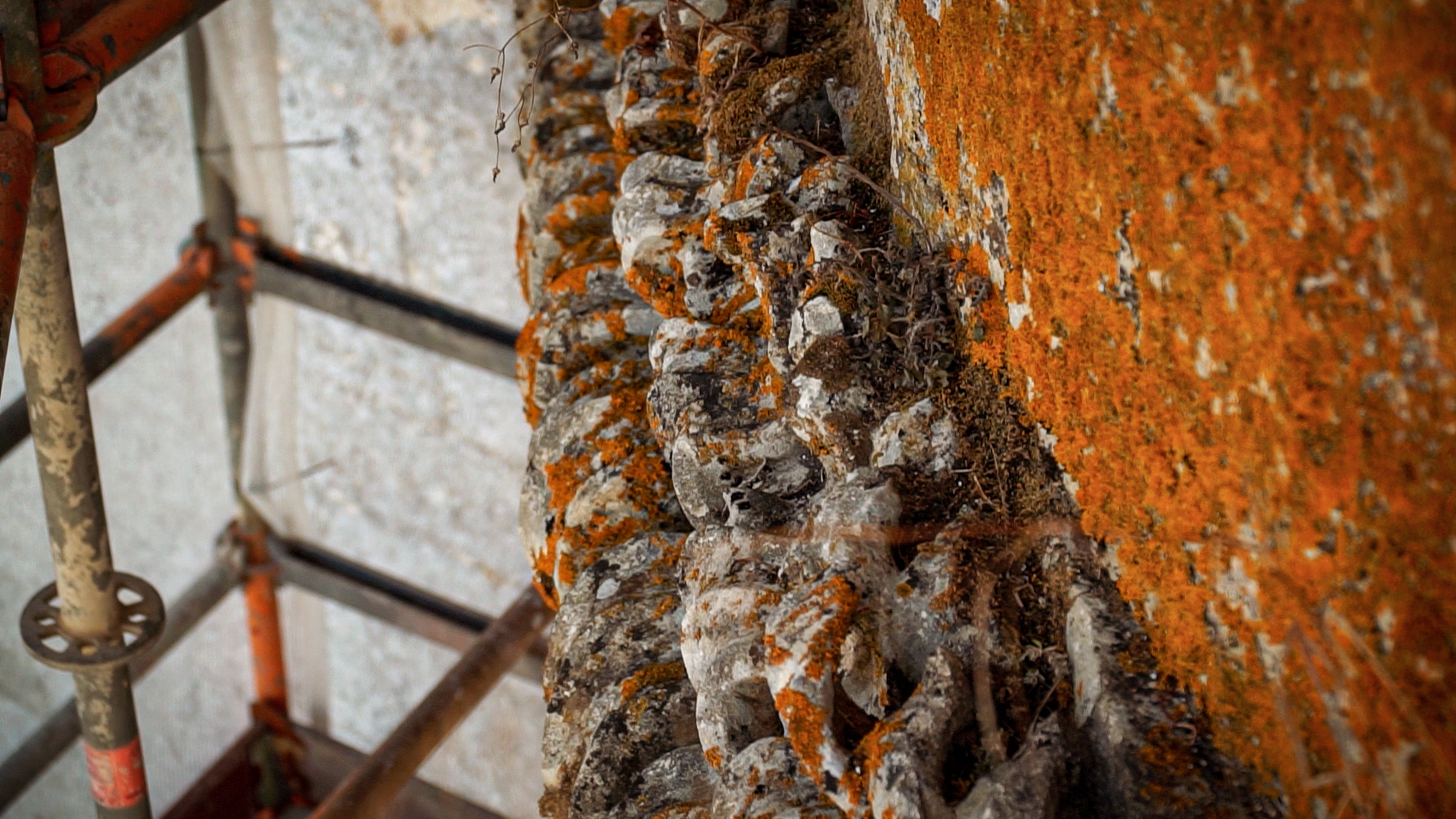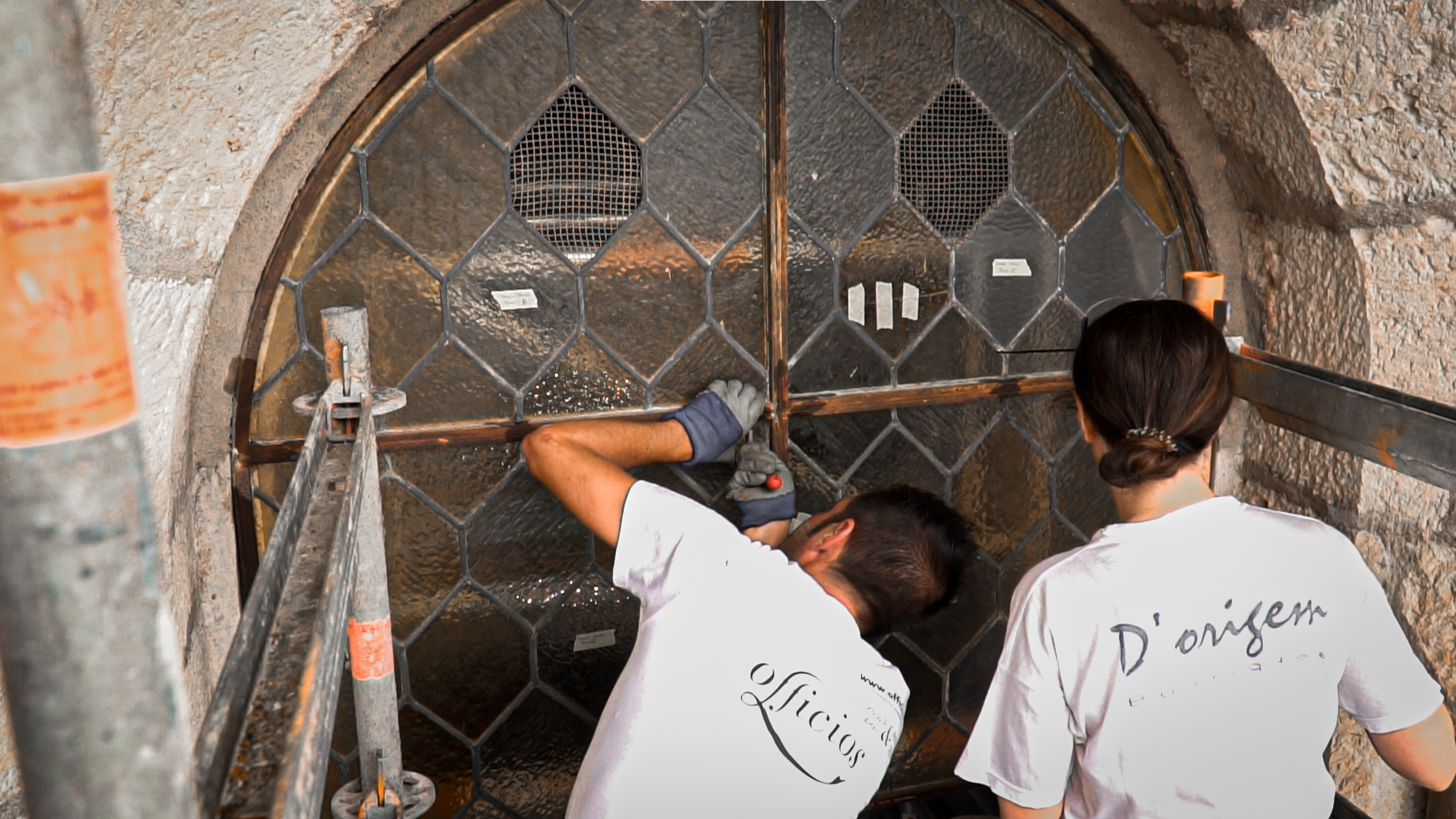Conservation and Restoration

The priority of the work is always to preserve the original appearance of the constituent elements avoiding treatments that irreversibly modify the set from the historical and artistic points of view. Consequently, a diagnosis will be made of the state of conservation of the areas to be treated, followed by cleaning, stabilisation and homogenisation of the stone surfaces. The church’s wooden, metallic and stained glass elements will also be restored.
Firstly, documentation work, detailed photographic recording and mapping of the changes will be carried out, to be included in the progress report on the intervention. The consolidation of elements that present some risk such as chips, flakes, scratches and crevices is also proposed. Loose fragments will also be collected and mapped and the weakened areas will be located.
The conservation and restoration procedures will also seek to combat and mitigate the widespread and severe proliferation of biological species, alterations in the superficial layers of the stone, the presence of fractured and/or displaced elements and the existence of degraded and non-functional joints that allow water infiltration. The final objective is to ensure the physical and chemical stabilisation of the constituent materials and the restoration of the aesthetic appearance of the façades.

Previous interventions were carried out on this set in 2002 and between 2009 and 2010. The first consisted only of a test cleaning and extraction of the biological layer, which resulted in an adequate level of cleanliness, currently serving as an example for the interventions on the remaining architectural surfaces. The second, a pilot intervention, provided important data to support the current project, as it allowed for the testing of cleaning methods and the assessment of the conservation status of the stone surfaces.
The current intervention will include mainly the general cleaning of the wood, its replacement and/or treatment. As far as the stone is concerned, in addition to removing lichens and other invasive biological species, cracks will be filled in, water drainage surfaces will be corrected and detached elements will be consolidated. In simplified terms, some of the techniques that will be used in this intervention include: point application, by spraying, of a herbicide product; micro-stuccoing; the replacement of mortar volumes; the application of a barium hydroxide solution using pads; the gluing of fractured elements and the application of a water-repellent product on stone surfaces, through the use of a nanotechnology-based product with a colourless finish.
As previously mentioned, the stained glass windows located in the Charola and in the Manueline Nave will also be restored. These are very dirty and have some cracks, areas where glazing putty is missing, deteriorated lead rails and metal fittings. They will be cleaned and the lead rails and support rims will be treated.

Glazing that is in good condition will be maintained. Caulking will also be checked and, if necessary, any gaps filled with glazing putty.
Throughout the process, two technical reports will be produced. The first (already mentioned) - progress report - will be delivered after the surveys and mapping are completed and will include a diagnostic examination, description of preliminary observations made in the course of treatment and photographic documentation of the initial state of conservation. The final report will contain a detailed description of the works carried out, accompanied by the respective graphic and photographic documentation.
It should be noted that all the treatment proposals defined are in accordance with the International Standards and Charters for Conservation and Restoration.
Photos and videos - Christopher Pratt and Orlando Oliveira in service of Next Solution Lda.


